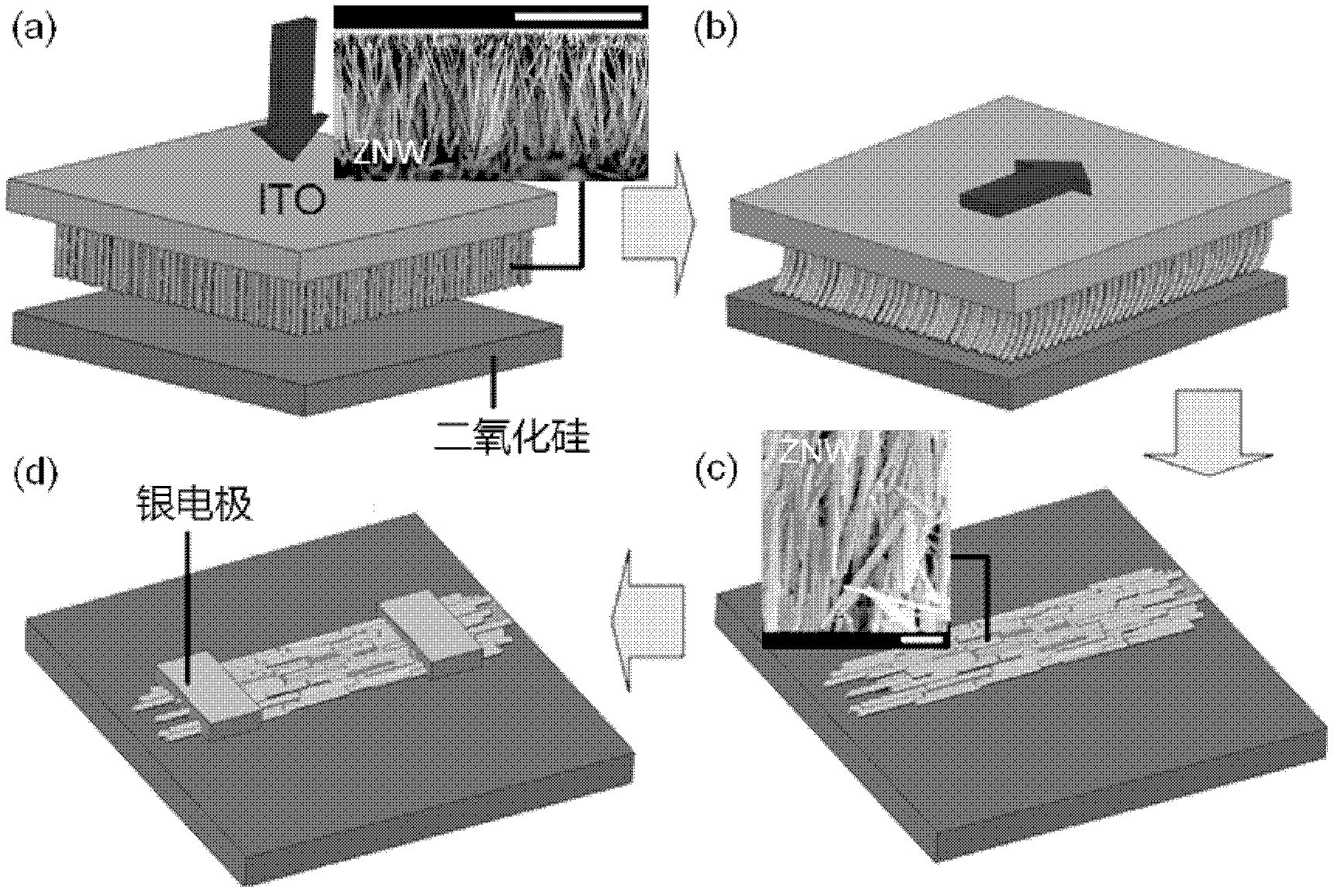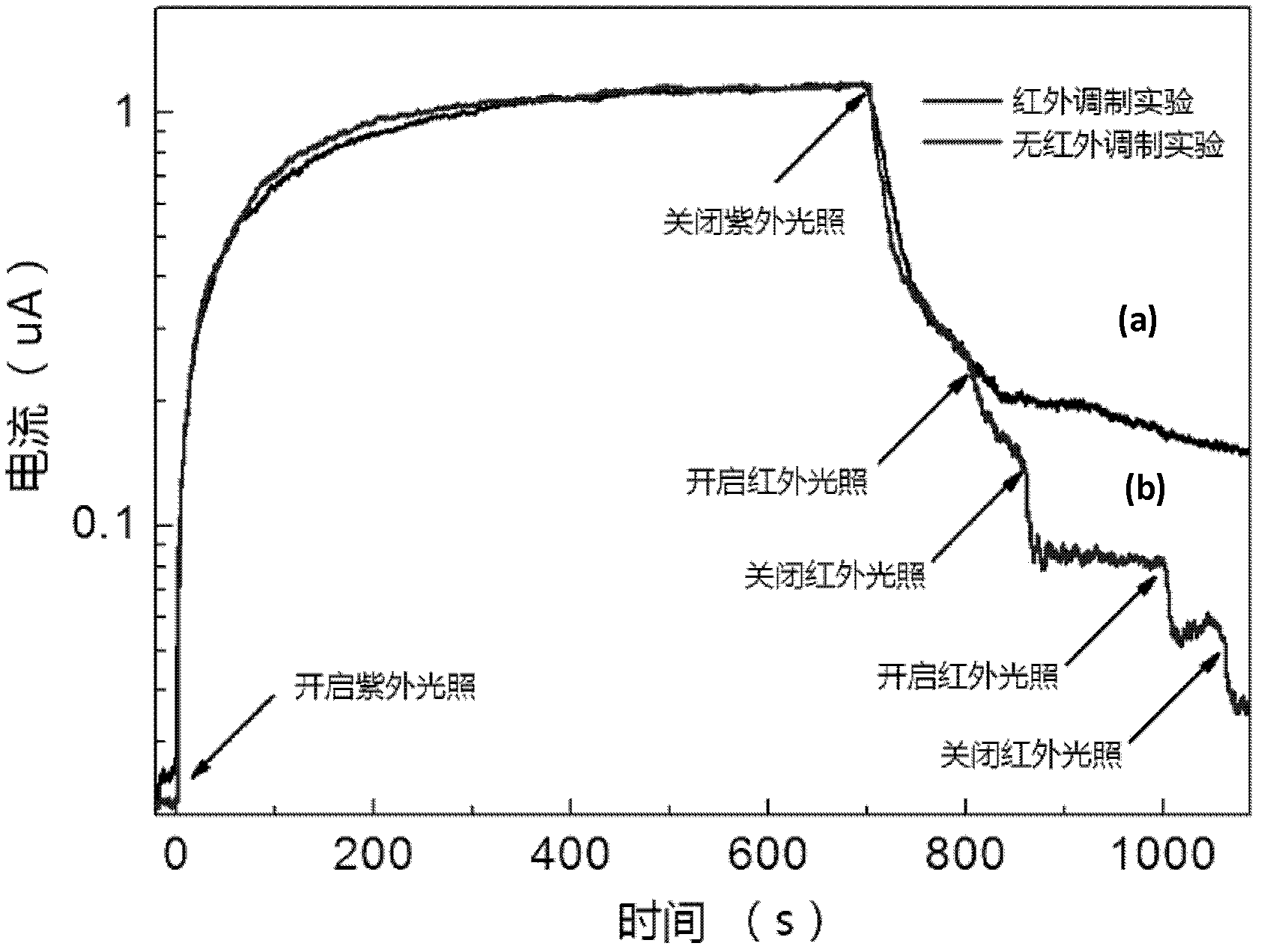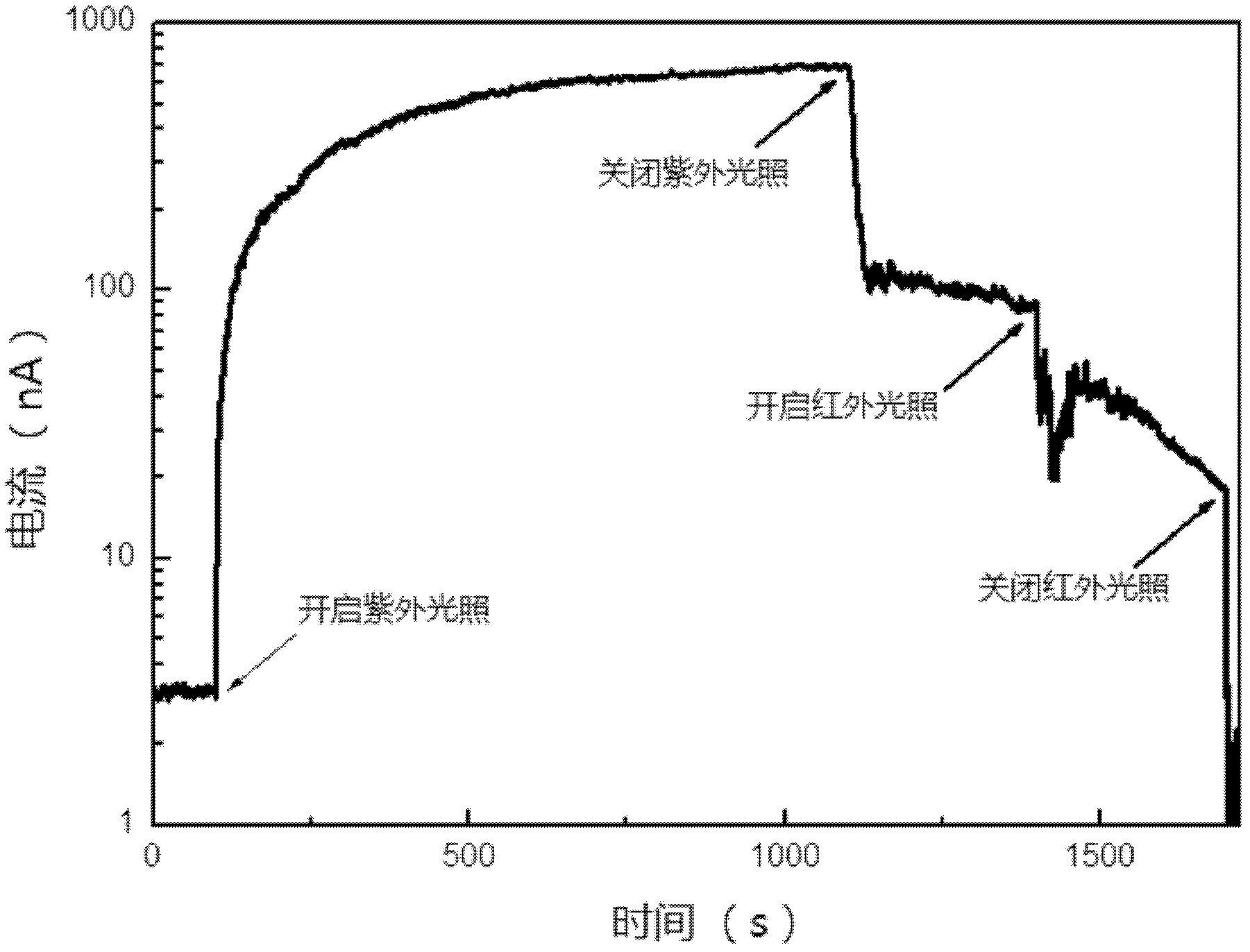An Optical Method to Modulate the Persistent Photoconductive Effect of ZnO Nanowires
A zinc oxide nanowire, optical method technology, applied in nanotechnology, nanotechnology, climate sustainability and other directions, to achieve the effect of low cost, convenient method and fast response
- Summary
- Abstract
- Description
- Claims
- Application Information
AI Technical Summary
Problems solved by technology
Method used
Image
Examples
Embodiment 1
[0013] Electrochemical method is used to prepare zinc oxide nanowires on ITO conductive substrate. The diameter of the prepared zinc oxide nanowires is 50-100nm and the length is 5-10μm, such as figure 1 Inset in (a). Using the zinc oxide nanowire sample, a zinc oxide nanowire optoelectronic device was prepared on a silicon dioxide substrate by "printing method". Specific steps such as figure 1 Shown: (a) The ZnO nanowire array grown on the ITO conductive substrate was lightly placed on the silicon dioxide substrate. The inset is the SEM picture of the ZnO nanowire array, and the scale length is 10 microns; (b) the ZnO nanowire array sample grown on the ITO conductive substrate is drawn across the silicon dioxide substrate along a fixed direction; (c) in two A nanofilm composed of ZnO nanowires with strong directionality is left on the silicon oxide substrate. The inset is the SEM picture of ZnO nanowires arranged in an orderly manner, and the scale length is 1 micron; (d) i...
Embodiment 2
[0016] Referring to Example 1, zinc oxide nanowires were prepared on an ITO conductive substrate by an electrochemical method. The diameter of the prepared zinc oxide nanowires was 50-100 nm and the length was 5-10 μm. Using the zinc oxide nanowire sample, a zinc oxide nanowire optoelectronic device was prepared on a silicon dioxide substrate by "printing method".
[0017] Apply a voltage of 5V between the two electrodes of the above-mentioned zinc oxide nanowire photoelectric device, use an ultraviolet excitation light source with a wavelength of 365nm to irradiate the zinc oxide nanowire photoelectric device, and then use an infrared light source with a wavelength of 905nm to irradiate the photoelectric device in a continuous photoconductive state. The zinc oxide nanowire optoelectronic device reduces the electrical conductivity of the zinc oxide nanowire optoelectronic device, thereby realizing continuous photoconductive quenching. The effects of ultraviolet and infrared li...
Embodiment 3
[0019] Referring to Example 1, an array of zinc oxide nanowires was prepared on an ITO conductive substrate by an electrochemical method. The diameter of the prepared zinc oxide nanowires was 50-100 nm and the length was 5-10 μm. Using the ZnO nanowire sample, a ZnO nanowire optoelectronic device was prepared on a silicon dioxide substrate by "printing method".
[0020] Apply a voltage of 5V between the two electrodes of the above-mentioned zinc oxide nanowire photoelectric device, use an ultraviolet excitation light source with a wavelength of 365nm to irradiate the zinc oxide nanowire photoelectric device, and then use an infrared light source with a wavelength of 880nm to irradiate the photoelectric device in a continuous photoconductive state. The zinc oxide nanowire optoelectronic device reduces the conductivity of the zinc oxide nanowire optoelectronic device, thereby realizing continuous photoconductive quenching. The effects of ultraviolet and infrared light on the sus...
PUM
| Property | Measurement | Unit |
|---|---|---|
| Wavelength | aaaaa | aaaaa |
| Diameter | aaaaa | aaaaa |
| Length | aaaaa | aaaaa |
Abstract
Description
Claims
Application Information
 Login to View More
Login to View More - R&D
- Intellectual Property
- Life Sciences
- Materials
- Tech Scout
- Unparalleled Data Quality
- Higher Quality Content
- 60% Fewer Hallucinations
Browse by: Latest US Patents, China's latest patents, Technical Efficacy Thesaurus, Application Domain, Technology Topic, Popular Technical Reports.
© 2025 PatSnap. All rights reserved.Legal|Privacy policy|Modern Slavery Act Transparency Statement|Sitemap|About US| Contact US: help@patsnap.com



